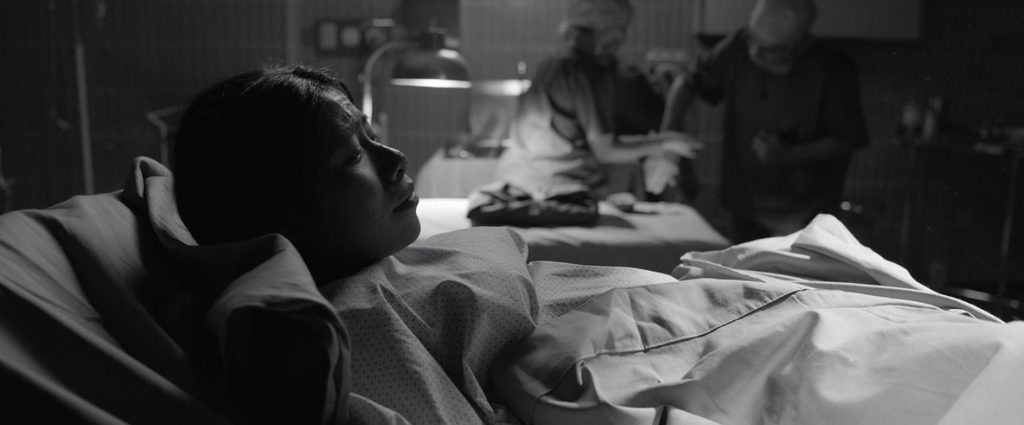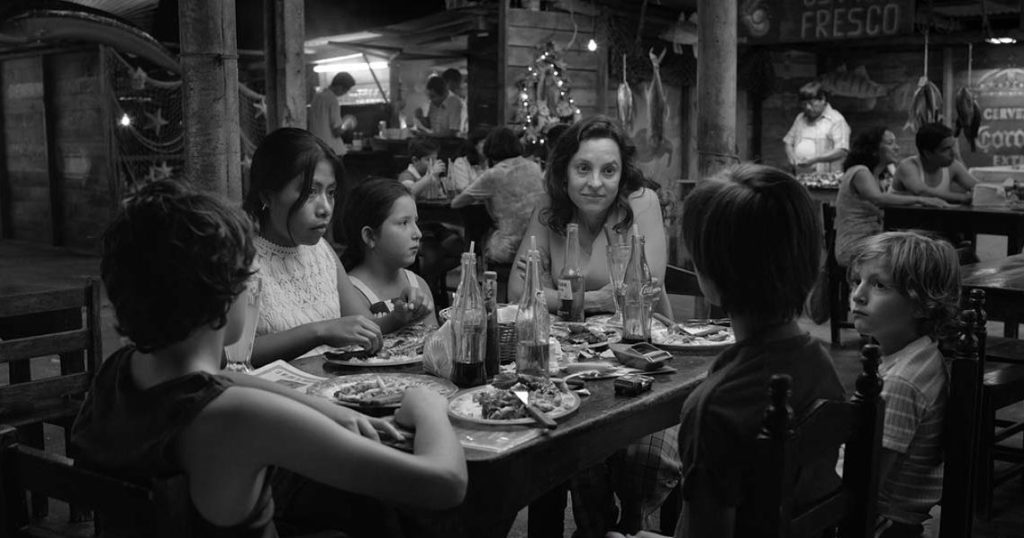“Roma” is a masterfully directed film. Set in the Roma neighbourhood of Mexico City in 1970, the story is a deeply personal one for director Alfonso Cuarón, who was raised here in a family much like the one depicted in the film. In fact, the main character Cleo Gutiérrez (played marvellously by Yalitza Aparicio) is based on Cuarón s own maid and nanny when he was growing up, a woman named Libo Rodríguez. It is to Libo that the film is dedicated.
Cuarón and his team carefully construct the world of the film in immense detail; it feels as real as if we were watching a documentary. And yet, the immersive nature of the film may be one of the things that frustrate some viewers: by showing us a portrait of a place and time, Cuarón is showing us reality rather than a plot. The pacing of the first half of the film is very slow, especially compared to the breakneck speed of today’s blockbusters, and it doesn’t initially appear to have a strong driving narrative. However, this is part of what makes “Roma” special and viewers will be rewarded for their patience with a story that is as deep and rich as any recent movie.
As a director, Cuarón demonstrates incredible patience by intentionally lengthening shots and showing small, seemingly meaningless interactions between family members. Through this, he is rooting the family in real life, allowing the viewer to empathize with the characters on a level not often seen in contemporary cinema. When tragedy begins to unfold in the second half of the film, it is the believability of the characters and the detailed world that they inhabit that draws the viewer in.
An integral aspect of the film’s realism is the genuine performances by all members of the cast. The children shine, fighting and playing like children, while Aparicio is incredibly expressive in her emotions and subtle facial expressions, particularly in her eyes. At times, we almost want more from the inner world of characters like Cleo, but we are forced to simply observe, which may be based on Cuaron’s own experience of observing the actions of his nanny or parents, but not penetrating their inner thoughts.

The lack of score enhances the feeling that we are simply watching the true events of a family in 1970s Mexico, as does the number of long takes used by Cuarón throughout the film. Long, uninterrupted takes are a trademark of Cuarón, but they do not feel stale or gimmicky. Rather, they allow the viewer to feel as if they are really sitting in the house and watching an interaction between family members; at times, this can feel almost invasive, as if we are watching an intimate moment that isn’t meant for us.
These long shots provide some of the best examples of Cuarón’s talent as a director: notable shots include a costumed man singing while people fight a forest fire in the background, a riot and ensuing massacre on the streets, an incredibly emotional childbirth, and a scene where two children are rescued from drowning at the film’s climax. Throughout the film, Cuarón confidently executes complicated and detailed shots, while providing a clear focal point amidst the business. Due to a scheduling conflict, this film does not feature cinematographer Emmanuel Lubezki, who frequently collaborates with Cuarón, yet Cuarón proves to be an exceptional cinematographer in his own right. “Roma” is without a doubt one of the most beautiful films released this year.
Featuring Cuarón as writer, cinematographer, and director, as well as being largely inspired and drawn from his childhood, “Roma” is his most personal film. It is his masterpiece, providing a real and emotional story within a world that is astoundingly immersive. We can only hope that Netflix will widen the scope of “Roma”s cinematic release, as this picture deserves to be seen on the big screen.
-by Kieran Davey


